
1. Give Them Words!
Getting early readers excited to write can be TOUGH! So, start off by giving your students a PLETHORA of words! When students are learning to read, they spend A LOT of time sounding out words during phonics and reading lessons. When it is time to write, give students a collection of fun (easy AND hard to spell) words! When you give students a wide variety of words that they don’t have to spend time sounding out, they can relax and focus more on what they are interested in writing about.
You can do this in SO many ways:
-Post picture word cards. These can be themed, seasonal, or ask students what picture word cards they would like to use and create them using their ideas!
-Give students access to a picture dictionary.
-Generate a list of words with students during your writing mini-lesson. Write these on an anchor chart and post it in your classroom! *Don’t forget to leave a little illustration next to each word. 🙂
-Let students pick out some books from your classroom library where they might be able to find words they could use in their stories.
-Let students write down words they love to use often in a notebook that they can refer to each time they write.
Here is another way I give students words! They are printed on each page of their writing journals. This also helps us focus on a topic during our mini-lessons!
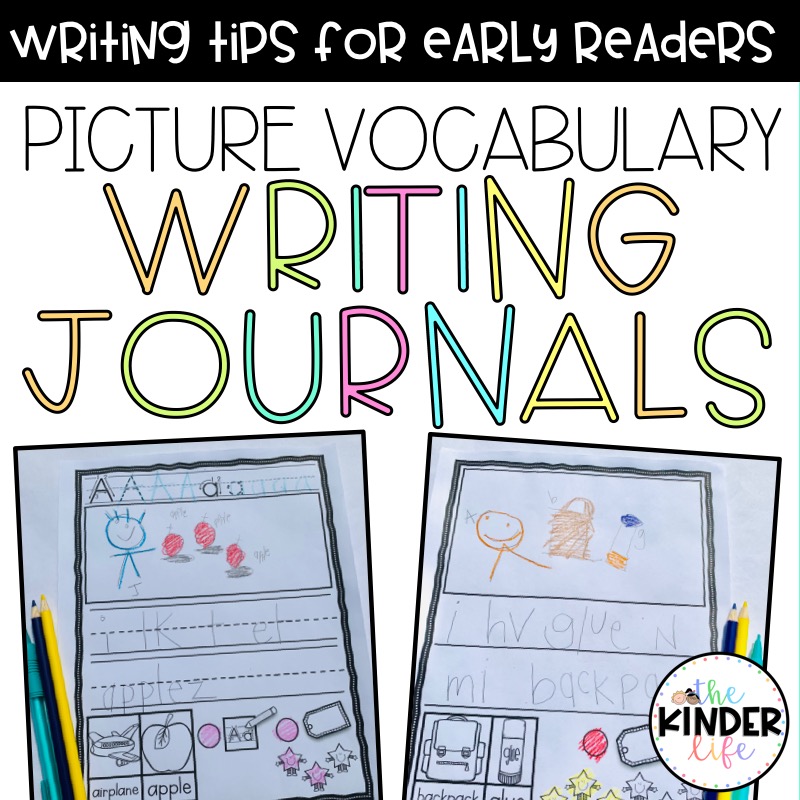
2. Plan Your Story Ahead of Time
Before independent writing time, plan a mini-lesson. During this mini-lesson, review the topic and/or goal(s) you have for students during their writing time that day. This lesson should be short, BUT I think it is important to include some time within that mini-lesson where you model writing in front of your students.
What you choose to write about works best if it is INTERESTING and EXCITING for students. This is where planning your story ahead of time is very important. For example- If you are working on punctuation and the words you are giving to students happen to include a lot of animal names… Do some research on an interesting animal and while you model correct punctuation, write about a “gross” fact or something to make your students *GASP* “WOW“. When writing about something you experienced yourself, fib a little. Writing story about that one time you visited the beach and ate some delicious ice cream is much LESS engaging than a story about that one time you ate CHEESE PIZZA flavored ice cream on a super raining day at the beach.
**Now if making up a silly story makes you worried that parents will be coming back to you wanting to know more, make it something believable or make a game out of it (AFTER WRITING)!
After writing: Can you guess the silly part I added to my story? My biggest GOAL when getting my beginning readers writing? I want them to have FUN! As you probably know, writing isn’t always everyone’s favorite thing to do.
Another idea: Take time to watch a popular T.V. show that your students love. Could you use a similar plot or these familiar characters in one of your mini-lessons?
3. Give Them Clear Goals
Writing can be a DAUNTING task, especially for a beginning reader/writer. There are SO many aspects of writing: spelling, handwriting, spaces, vocabulary, capitalization, etc. Break goals down for students and make sure these goals are CLEAR and MODELED by you constantly.
IDEAS:
-During your mini-lesson make an anchor chart about the goal you are working on (e.g. punctuation).
-Write a short passage with mistakes on PURPOSE and work with students to find all the mistakes! -This can be posted later as a poster too!-
Here are pictures of some of the GOAL posters included in each of my writing journal packs.
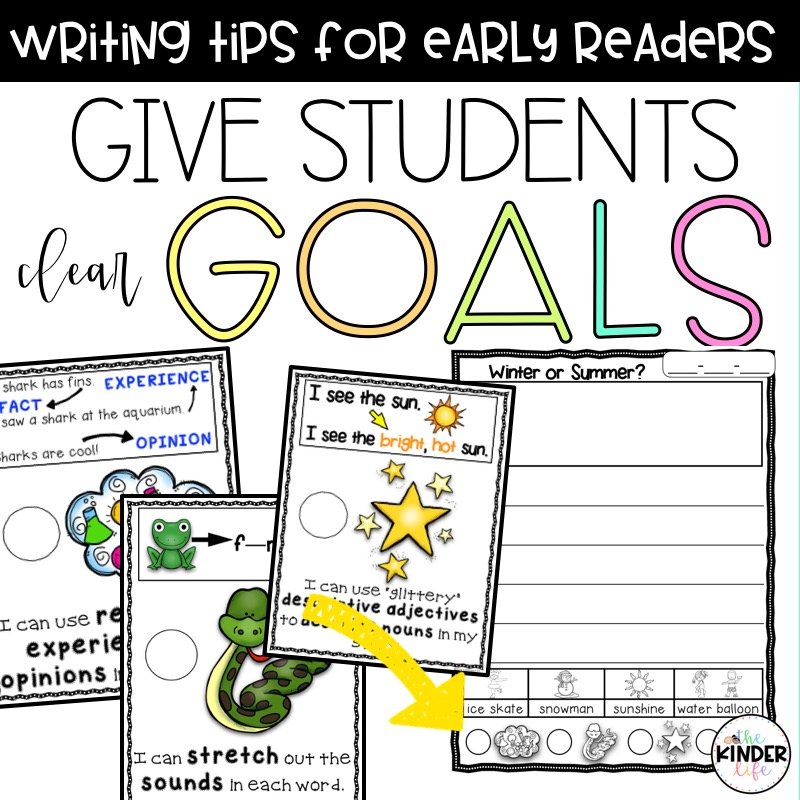
4. Add Something Fun!
This is a SUPER easy one. Add something fun to your independent writing time once a week!
IDEAS:
–Marker/Highlighter Day: You can write with a marker, pen, or highlighter instead of a pencil!
–Stickers: Pick two stickers and make a silly story about them. OR let students read their stories to a partner after writing and then students trade a sticker after listening to each story.
–Writing About a Food: Is there a food all your students can eat? Let’s write a silly story about this food after we have a mini picnic!
–Sit in a DIFFERENT Seat Day: Students can choose where they write that day.
–Typing their story on a computer!
-Grab some Pen Pals! You will read about this in #6!
Do you have more ideas? Leave a comment below! I would love to add your ideas to this list! Want a free letter to send home to families?! Click here!
5. TWO WORDS: Author’s Chair
If you have never had an Author’s Chair, you are missing out on something MAGICAL! At the end of independent writing time, I give students 10 minutes of Author’s Chair. This is a time where individual students can choose to sit in a SPECIAL CHAIR and read aloud their story to their peers! *I often use my teacher chair, but you could also designate a specific chair for this purpose.*
During Author’s Chair there are few rules:
-The audience must be polite and quiet or a student may lose their Author’s Chair privileges for a week.
-After each reading, we give the author applause and the author can choose two students who would like to ask ONE question or make ONE comment about the story.
-The author must practice holding their story below their face while reading, etc.
*These are things we practice as we go.
Author’s Chair can be VERY POPULAR and so I had to make a weekly schedule for my students. Each student had a specific day to sit in the Author’s Chair, if they felt like it that particular day/lesson. This way students had a whole week to plan what story they would share on their Author’s Day chair!
Click here for a FREE EDITABLE Author’s Chair Schedule!
6. Get Some Pen Pals!
Grab the class next door or the older buddies upstairs! Your students will LOVE writing (and/or just DRAWING at first) to their PEN PALS! If these Pen Pals are close by, have them exchange letters in person. Or if they live far away, plan a SKYPE date!
You can let students freely write about whatever they want to or give students a prompt each time. What did they do this week? What can they tell their Pen Pal about their favorite things? What things do they do for fun? Does their Pen Pal like the same things?!
Looking for a NO PREP structured way to use Pen Pals in your classroom?! Grab this pack from my store! According to my Terms of Use, you are ALLOWED to share it with you Pen Pal Teacher Partner too! 🙂
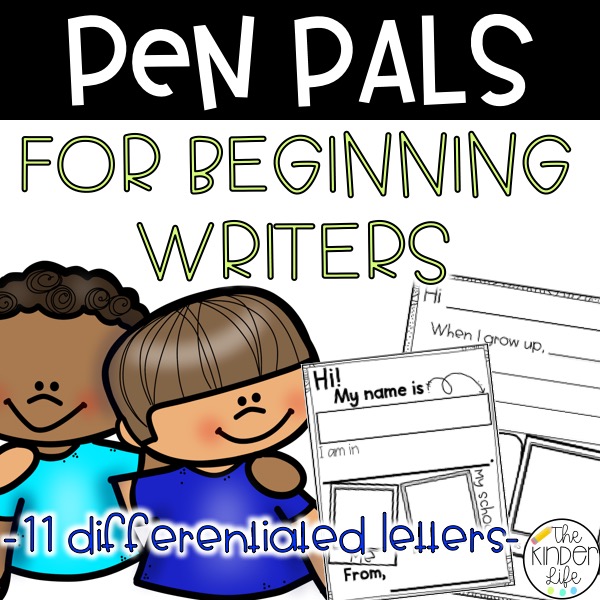
7. Brainstorm Ideas Together!
This is super important. When students are beginning to write, they often cannot think of what to write about and IF they have an idea, it is often something very simple…leading to one sentence or a couple words or so.
When you brainstorm a list of ideas as a group during your mini-lesson, WRITE THESE IDEAS DOWN. You might even want to write the name of the student who shared it next to the idea **Bonus recognition for those little ones…and encourages others to want to share:).
When I do this with my students, I see them coming back up to the poster to check out the ideas again if they get stuck. It has really helped those little ones who struggle with ideas.
NOW…you might get students who write a story very similar to another’s idea. THAT IS OK. Remember you just want them to be writing. Don’t discourage it. Instead encourage them to add something unique to their version.
8. Get Students Moving While They Write!
Have you ever tried a Write the Room activity?! You post words all around the room, on the walls, desks, floor, etc. and give students a recording sheet. They have to find the word cards and write the words they find on their recording sheet! An fun writing game AND EASY MOVEMENT BREAK!!
Click the image below to try out a FREE Write the Room Activity!
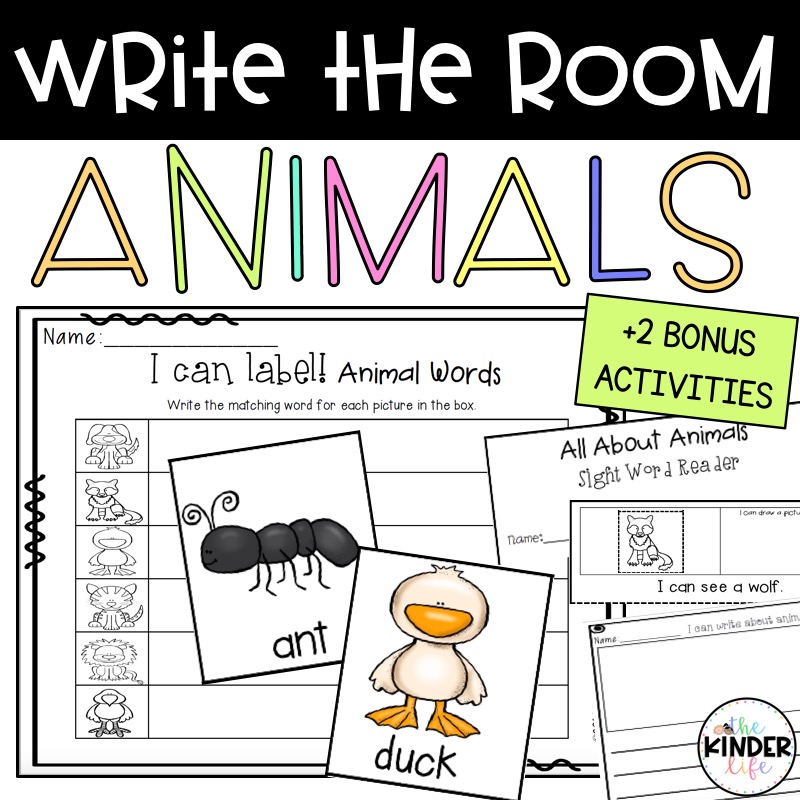
9. Practice Revising With Peers
This one takes some practice. So take baby steps. This could even be just a simple revision like…a peer gives you an idea of what else you can add to a picture. Then you can move on to having peers help each other check for punctuation, etc. Believe me… if you start practicing these kinds of habits in the beginning of the year, your students will be CONFIDENT and EXCITED about peer revisions later in the year. I have seen it happen in my classroom! 🙂
Here is the editing rubric found in the May pack of my Writing Journal Bundle.
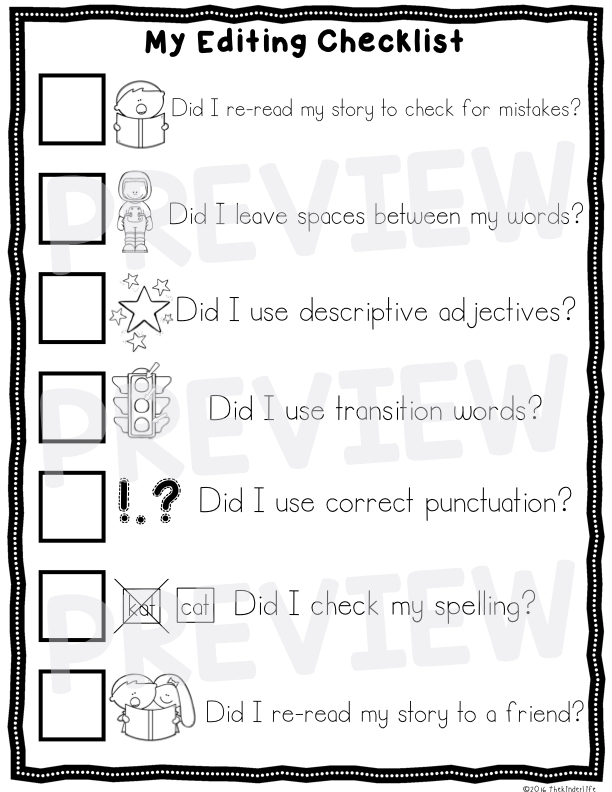
10. Don’t Forget to Celebrate!
Throw a writing celebration. Throw a couple writing celebrations! THROW A WRITING CELEBRATION EVERY COUPLE MONTHS OR SO! Writing is hard, please celebrate everything your students continue to overcome when learning to write.
What is a writing celebration?? A writing celebration is a mini party, where students pick one special story and share it with family, friends, other teachers, etc. You can decide how big or small each writing celebration is. You could start small, see how it goes and then go from there.
During my celebrations, a good handful of parents attended and we often invited other classes and teachers. We brought treats. We made special covers for our stories or backed them on colorful paper. You can get as creative as you want with this!

Click here to access an EDITABLE Writing Celebration letter you may want to use!
Have anything else you would like to add about how to make writing magical for beginning readers?! PLEASE SHARE!